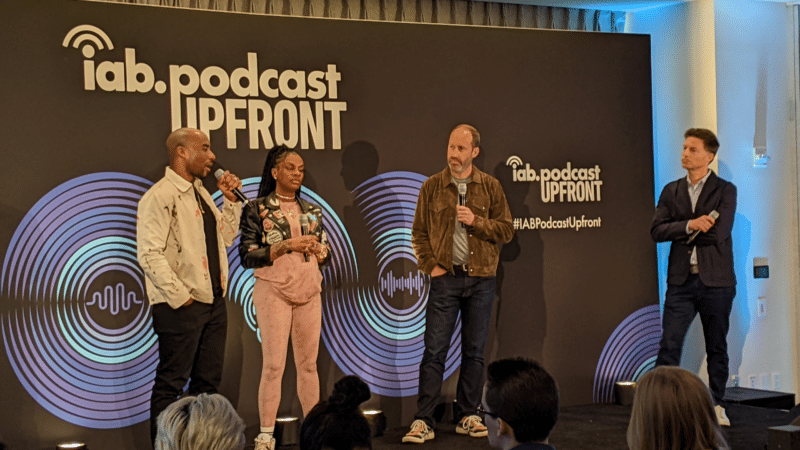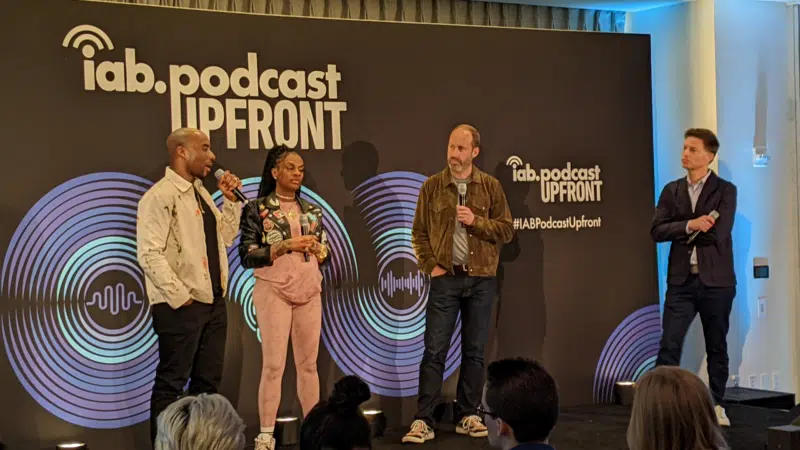MARKETING
How To Make LinkedIn Your Top B2B Social Media Platform
Eight in 10 B2B marketers use LinkedIn to market their brand. Of that group, 40% say it is their No. 1 platform.
In the next year, 54% of marketers say they plan to up their organic activity on LinkedIn according to the 2022 Social Media Marketing Industry Report from Social Media Examiner (gated). Forty-three percent use LinkedIn as a lead generator, while over one-third buy LinkedIn ads.
8 in 10 #B2B marketers use @LinkedIn to market their brand. 40% say it’s their No. 1 platform according to @SMExaminer via Aleksandra Iakovleva of @VistaCreate @CMIContent. Click To Tweet
That’s a lot of activity happening on LinkedIn. Of course, that doesn’t mean all that activity delivers what you want to achieve. It takes more than an on-site presence to use LinkedIn successfully. It’s about optimizing your brand’s presence and developing quality paid and organic content.
These tips can help you do just that – and I’ve added some inspiration from four companies already making the most of their LinkedIn presence.
Optimizing isn’t just for traditional search
Your company has a presence on LinkedIn, but is it making the most of that existence? These five tips can ensure that you do.
1. Do SEO
Including keywords related to your business can help your targeted audience using LinkedIn’s search feature to discover your page.
Incorporate the most relevant in your page’s headline, tagline, and summary. Add more keywords to your posts. Make sure not to overdo it — repeating keywords over and over isn’t a good practice for traditional search, and it isn’t smart for LinkedIn search either. Instead, use keywords sparingly so that they fit seamlessly into your content.
2. Customize your URL
You don’t have to keep the random numbers and letters that LinkedIn used to generate your page URL. You can alter your URL to align with your business.
This URL – https://www.linkedin.com/98kdf8Vlio49/446JpwWx – was altered to make it look like this: https://www.linkedin.com/company/vistacreateofficial.
One is nonsense; one perfectly represents our brand name.
To change your URL, go to the business page:
- In the left sidebar, select Edit Page, then click on page info.
- Under the header LinkedIn public URL, you can change the suffix of your URL in the text box.
- Click save at the top of the box.
Now, you can help visitors clearly see the brand in the URL, as well as improve brand awareness when promoting the page link.
Don’t let your brand’s @LinkedIn URL stay a jumble of letters and numbers. Change it to incorporate your brand name, says Aleksandra Iakovleva of @VistaCreate via @CMIContent. Click To Tweet
3. Add external links
Whether your goal with LinkedIn is to generate leads, make sales, or increase your brand awareness, you want to drive traffic to your external pages. The best way to do that is to include external links to your business’ portfolio and a direct link to your website in your profile.
4. Implement a coherent design
A brand design is vital when it comes to recognition. In fact, even having a signature color can result in an increase in brand recognition. Your brand should have an instantly recognizable logo, color scheme, and text type. Your LinkedIn page should be no different.
On LinkedIn, you have both a profile picture and a banner image. Make sure you fit your brand’s visual identity and communicate immediately what your audience can expect as they are the first things they see when they click on your page. Don’t shy away from tapping into current design trends to make your LinkedIn page and posts look more modern. When a post is visually appealing, it inevitably gets more attention and engagement.
5. Listen to the data
Luckily, LinkedIn has the next best thing to reading people’s minds with its incredible analytics system.
You can track a number of important metrics – total page views, clicks from unique visitors, and frequency of clicks on external links.
It also allows you to compare your results with your competitors to see how you measure up, in addition to giving a full breakdown of your lead generation analytics.
By studying the data, you can figure out which features of your page are and aren’t working. You can then tailor each aspect of your page as appropriate.
Investing in paid content on LinkedIn
LinkedIn paid content opportunities are varied and useful. They include sponsored content, sponsored messages, text ads, and dynamic ads. Let’s walk through each one.
1. Sponsored content
Pay to promote a piece of your posted content to expand your reach. It will show up as “promoted” content on the home page of LinkedIn users targeted by your brand. Sponsored content can be text only, incorporate an image, video, or carousel, or be an event.
2. Sponsored messages
While sponsored content appears in the news feed, sponsored messages are delivered directly to the LinkedIn user’s inbox. This feature lets you target individual consumers with a personalized message.
This seems like a slam dunk of an opportunity, right? But interestingly, according to LinkedIn, while 89% of consumers say they would like to use messaging with businesses, only 48% of businesses use this tactic to engage with their audience.
Most consumers say they would like businesses to use messaging, but less than half of brands do it, says Aleksandra Iakovleva of @VistaCreate via @CMIContent. Click To Tweet
3. Text ads
If you go onto your LinkedIn home page, you can see in the top right corner a little box titled “Promoted” with three small ads. Each one has a headline above less than two lines of text.
These LinkedIn text ads are short and snappy. You can target an audience using broad factors such as location all the way down to detailed criteria such as job titles.
For a bit more info on text ads, check out this resource from LinkedIn.
4. Dynamic ads
Dynamic ads are an amazing resource. Essentially, each ad is tailored to the viewer based on their LinkedIn profile data – profile photos, company names, job titles, etc.
Dynamic ads perfectly blend wide outreach with tailored individual ads. That is a win-win in my book.
Finding inspiration
Let’s look at how some brands use LinkedIn in strategic and effective ways.
1. Post content that resonates
You’ve got to make sure your posted content is packed full of value. Tell stories, demonstrate how your business can help, express your opinion on an industry topic, and explain statistics you’ve noted. In short, create content that your audience wants to read.
This post from dairy-free milk provider Oatly focuses on its European audience, explaining how cow-based milk affects school children in part because of their emission of carbon dioxide. It outlines the European Commission’s willingness to hear about plant-based alternatives. The call to action includes a link to a petition, a link to learn more, and a link to the sources cited in the post.
This post also incorporates both text and video and clearly outlines the brand’s position.
2. Use an authentic voice
People buy from companies they trust. Make sure your posts are created with that trust-building in mind.
Giving your business an authentic voice means that your business will come across as a real living and breathing organization that has a sense of humanity rather than a cold, hard, and bland corporation.
Innocent Drinks, a UK-based smoothie maker, lets its personality shine through in this LinkedIn post about its Beacon Project. Here’s the opening paragraph:
Last week was World Bee Day. We couldn’t bee-lieve it either. Sorry. We know we probably should have posted about it last week on the actual day, but we’ve just been such busy bees. Not sorry for that one, it’s a corker. With that in mind, we wanted to share some exciting news about the Beacon Project. It’s our three-year campaign to test how different ways of farming can promote wild pollinators and make the fruit trees even more fruitful and resilient to climate change.
That’s a lot of bee-related puns, which indicates the voice of Innocent Drinks is filled with humor and is bold and expressive.
3. Use hashtags properly
Hashtags are still a powerful tool on LinkedIn. They can be used to add a bit of emphasis to your posts, but they’re also a key tool for branching out to new audiences and improving your discoverability.
But hashtags should be used sparingly and specifically. It’s best to keep hashtags to fewer than five in the body or bottom of the post.
In this post from L’Oréal about living wages, the personal care company incorporates two relevant hashtags into the text – #LivingWage and #HumanRights. Anyone who enters the hashtag will most likely find L’Oréal’s post. That can increase their brand awareness and show them as a company that cares about sensitive issues.
4. Make it multimedia
When creating a post, you could just write text. But why waste the opportunity to mix the media? You can add photos and videos, share an event, or even engage with your audience through polls.
Using media in your LinkedIn posts helps get eyes on your content. In fact, according to LinkedIn, posts that contain an image can result in up to 98% more comments. So you could be cutting engagement simply by not incorporating a visual element in your post.
Take this post from UK-based plant-based food company THIS. The crisp cold beer next to the deep red of the burger instantly catches your eye (and your stomach). Paired with the hand sticking out of the beer to make the “I” in “THIS” you’ve got yourself an absolute winner of an image with little explanatory text needed.
HANDPICKED RELATED CONTENT:
One more LinkedIn success ingredient
You’ve optimized your page and followed best practices in creating the content. But there’s one important factor to address – how frequently should you publish that quality, relevant, and optimized content.
LinkedIn has one of the longest content lifespans of all the social media platforms, with each post expected to stay on a person’s page for around 24 hours — that’s 18 hours longer than Facebook.
So instead of concentrating on constantly posting content, concentrate on posting content consistently. Pick a schedule that works for you and stick to it.
It allows your audience to reliably trust that your content will come through without constantly being bombarded. And as you know, that trust from your audience is the best and most far-reaching outcome of your LinkedIn content.
HANDPICKED RELATED CONTENT:
Cover image by Joseph Kalinowski/Content Marketing Institute
MARKETING
18 Events and Conferences for Black Entrepreneurs in 2024

Welcome to Breaking the Blueprint — a blog series that dives into the unique business challenges and opportunities of underrepresented business owners and entrepreneurs. Learn how they’ve grown or scaled their businesses, explored entrepreneurial ventures within their companies, or created side hustles, and how their stories can inspire and inform your own success.
It can feel isolating if you’re the only one in the room who looks like you.
MARKETING
IAB Podcast Upfront highlights rebounding audiences and increased innovation


Podcasts are bouncing back from last year’s slowdown with digital audio publishers, tech partners and brands innovating to build deep relationships with listeners.
At the IAB Podcast Upfront in New York this week, hit shows and successful brand placements were lauded. In addition to the excitement generated by stars like Jon Stewart and Charlamagne tha God, the numbers gauging the industry also showed promise.
U.S. podcast revenue is expected to grow 12% to reach $2 billion — up from 5% growth last year — according to a new IAB/PwC study. Podcasts are projected to reach $2.6 billion by 2026.
The growth is fueled by engaging content and the ability to measure its impact. Adtech is stepping in to measure, prove return on spend and manage brand safety in gripping, sometimes contentious, environments.
“As audio continues to evolve and gain traction, you can expect to hear new innovations around data, measurement, attribution and, crucially, about the ability to assess podcasting’s contribution to KPIs in comparison to other channels in the media mix,” said IAB CEO David Cohen, in his opening remarks.
Comedy and sports leading the way
Podcasting’s slowed growth in 2023 was indicative of lower ad budgets overall as advertisers braced for economic headwinds, according to Matt Shapo, director, Media Center for IAB, in his keynote. The drought is largely over. Data from media analytics firm Guideline found podcast gross media spend up 21.7% in Q1 2024 over Q1 2023. Monthly U.S. podcast listeners now number 135 million, averaging 8.3 podcast episodes per week, according to Edison Research.
Comedy overtook sports and news to become the top podcast category, according to the new IAB report, “U.S. Podcast Advertising Revenue Study: 2023 Revenue & 2024-2026 Growth Projects.” Comedy podcasts gained nearly 300 new advertisers in Q4 2023.
Sports defended second place among popular genres in the report. Announcements from the stage largely followed these preferences.
Jon Stewart, who recently returned to “The Daily Show” to host Mondays, announced a new podcast, “The Weekly Show with Jon Stewart,” via video message at the Upfront. The podcast will start next month and is part of Paramount Audio’s roster, which has a strong sports lineup thanks to its association with CBS Sports.
Reaching underserved groups and tastes
IHeartMedia toasted its partnership with radio and TV host Charlamagne tha God. Charlamagne’s The Black Effect is the largest podcast network in the U.S. for and by black creators. Comedian Jess Hilarious spoke about becoming the newest co-host of the long-running “The Breakfast Club” earlier this year, and doing it while pregnant.
The company also announced a new partnership with Hello Sunshine, a media company founded by Oscar-winner Reese Witherspoon. One resulting podcast, “The Bright Side,” is hosted by journalists Danielle Robay and Simone Boyce. The inspiration for the show was to tell positive stories as a counterweight to negativity in the culture.
With such a large population listening to podcasts, advertisers can now benefit from reaching specific groups catered to by fine-tuned creators and topics. As the top U.S. audio network, iHeartMedia touted its reach of 276 million broadcast listeners.
Connecting advertisers with the right audience
Through its acquisition of technology, including audio adtech company Triton Digital in 2021, as well as data partnerships, iHeartMedia claims a targetable audience of 34 million podcast listeners through its podcast network, and a broader audio audience of 226 million for advertisers, using first- and third-party data.
“A more diverse audience is tuning in, creating more opportunities for more genres to reach consumers — from true crime to business to history to science and culture, there is content for everyone,” Cohen said.
The IAB study found that the top individual advertiser categories in 2023 were Arts, Entertainment and Media (14%), Financial Services (13%), CPG (12%) and Retail (11%). The largest segment of advertisers was Other (27%), which means many podcast advertisers have distinct products and services and are looking to connect with similarly personalized content.
Acast, the top global podcast network, founded in Stockholm a decade ago, boasts 125,000 shows and 400 million monthly listeners. The company acquired podcast database Podchaser in 2022 to gain insights on 4.5 million podcasts (at the time) with over 1.7 billion data points.
Measurement and brand safety
Technology is catching up to the sheer volume of content in the digital audio space. Measurement company Adelaide developed its standard unit of attention, the AU, to predict how effective ad placements will be in an “apples to apples” way across channels. This method is used by The Coca-Cola Company, NBA and AB InBev, among other big advertisers.
In a study with National Public Media, which includes NPR radio and popular podcasts like the “Tiny Desk” concert series, Adelaide found that NPR, on average, scored 10% higher than Adelaide’s Podcast AU Benchmarks, correlating to full-funnel outcomes. NPR listeners weren’t just clicking through to advertisers’ sites, they were considering making a purchase.
Advertisers can also get deep insights on ad effectiveness through Wondery’s premium podcasts — the company was acquired by Amazon in 2020. Ads on its podcasts can now be managed through the Amazon DSP, and measurement of purchases resulting from ads will soon be available.
The podcast landscape is growing rapidly, and advertisers are understandably concerned about involving their brands with potentially controversial content. AI company Seekr develops large language models (LLMs) to analyze online content, including the context around what’s being said on a podcast. It offers a civility rating that determines if a podcast mentioning “shootings,” for instance, is speaking responsibly and civilly about the topic. In doing so, Seekr adds a layer of confidence for advertisers who would otherwise pass over an opportunity to reach an engaged audience on a topic that means a lot to them. Seekr recently partnered with ad agency Oxford Road to bring more confidence to clients.
“When we move beyond the top 100 podcasts, it becomes infinitely more challenging for these long tails of podcasts to be discovered and monetized,” said Pat LaCroix, EVP, strategic partnerships at Seekr. “Media has a trust problem. We’re living in a time of content fragmentation, political polarization and misinformation. This is all leading to a complex and challenging environment for brands to navigate, especially in a channel where brand safety tools have been in the infancy stage.”
Dig deeper: 10 top marketing podcasts for 2024
MARKETING
Foundations of Agency Success: Simplifying Operations for Growth


Why do we read books like Traction, Scaling Up, and the E-Myth and still struggle with implementing systems, defining processes, and training people in our agency?
Those are incredibly comprehensive methodologies. And yet digital agencies still suffer from feast or famine months, inconsistent results and timelines on projects, quality control, revisions, and much more. It’s not because they aren’t excellent at what they do. I
t’s not because there isn’t value in their service. It’s often because they haven’t defined the three most important elements of delivery: the how, the when, and the why.
Complicating our operations early on can lead to a ton of failure in implementing them. Business owners overcomplicate their own processes, hesitate to write things down, and then there’s a ton of operational drag in the company.
Couple that with split attention and paper-thin resources and you have yourself an agency that spends most of its time putting out fires, reacting to problems with clients, and generally building a culture of “the Founder/Creative Director/Leader will fix it” mentality.
Before we chat through how truly simple this can all be, let’s first go back to the beginning.
When we start our companies, we’re told to hustle. And hustle hard. We’re coached that it takes a ton of effort to create momentum, close deals, hire people, and manage projects. And that is all true. There is a ton of work that goes into getting a business up and running.


The challenge is that we all adopt this habit of burning the candle at both ends and the middle all for the sake of growing the business. And we bring that habit into the next stage of growth when our business needs… you guessed it… exactly the opposite.
In Mike Michalowitz’s book, Profit First he opens by insisting the reader understand and accept a fundamental truth: our business is a cash-eating monster. The truth is, our business is also a time-eating monster. And it’s only when we realize that as long as we keep feeding it our time and our resources, it’ll gobble everything up leaving you with nothing in your pocket and a ton of confusion around why you can’t grow.
Truth is, financial problems are easy compared to operational problems. Money is everywhere. You can go get a loan or go create more revenue by providing value easily. What’s harder is taking that money and creating systems that produce profitably. Next level is taking that money, creating profit and time freedom.
In my bestselling book, The Sabbatical Method, I teach owners how to fundamentally peel back the time they spend in their company, doing everything, and how it can save owners a lot of money, time, and headaches by professionalizing their operations.
The tough part about being a digital agency owner is that you likely started your business because you were great at something. Building websites, creating Search Engine Optimization strategies, or running paid media campaigns. And then you ended up running a company. Those are two very different things.


How to Get Out of Your Own Way and Create Some Simple Structure for Your Agency…
- Start Working Less
I know this sounds really brash and counterintuitive, but I’ve seen it work wonders for clients and colleagues alike. I often say you can’t see the label from inside the bottle and I’ve found no truer statement when it comes to things like planning, vision, direction, and operations creation.
Owners who stay in the weeds of their business while trying to build the structure are like hunters in the jungle hacking through the brush with a machete, getting nowhere with really sore arms. Instead, define your work day, create those boundaries of involvement, stop working weekends, nights and jumping over people’s heads to solve problems.
It’ll help you get another vantage point on your company and your team can build some autonomy in the meantime.
- Master the Art of Knowledge Transfer
There are two ways to impart knowledge on others: apprenticeship and writing something down. Apprenticeship began as a lifelong relationship and often knowledge was only retained by ONE person who would carry on your method.
Writing things down used to be limited (before the printing press) to whoever held the pages.
We’re fortunate that today, we have many ways of imparting knowledge to our team. And creating this habit early on can save a business from being dependent on any one person who has a bunch of “how” and “when” up in their noggin.
While you’re taking some time to get out of the day-to-day, start writing things down and recording your screen (use a tool like loom.com) while you’re answering questions.


Deposit those teachings into a company knowledge base, a central location for company resources. Some of the most scaleable and sellable companies I’ve ever worked with had this habit down pat.
- Define Your Processes
Lean in. No fancy tool or software is going to save your company. Every team I’ve ever worked with who came to me with a half-built project management tool suffered immensely from not first defining their process. This isn’t easy to do, but it can be simple.
The thing that hangs up most teams to dry is simply making decisions. If you can decide how you do something, when you do it and why it’s happening that way, you’ve already won. I know exactly what you’re thinking: our process changes all the time, per client, per engagement, etc. That’s fine.
Small businesses should be finding better, more efficient ways to do things all the time. Developing your processes and creating a maintenance effort to keep them accurate and updated is going to be a liferaft in choppy seas. You’ll be able to cling to it when the agency gets busy.
“I’m so busy, how can I possibly work less and make time for this?”


You can’t afford not to do this work. Burning the candle at both ends and the middle will catch up eventually and in some form or another. Whether it’s burnout, clients churning out of the company, a team member leaving, some huge, unexpected tax bill.
I’ve heard all the stories and they all suck. It’s easier than ever to start a business and it’s harder than ever to keep one. This work might not be sexy, but it gives us the freedom we craved when we began our companies.
Start small and simple and watch your company become more predictable and your team more efficient.
-

 PPC6 days ago
PPC6 days agoHow the TikTok Algorithm Works in 2024 (+9 Ways to Go Viral)
-

 SEO5 days ago
SEO5 days agoHow to Use Keywords for SEO: The Complete Beginner’s Guide
-

 SEO7 days ago
SEO7 days agoBlog Post Checklist: Check All Prior to Hitting “Publish”
-

 MARKETING6 days ago
MARKETING6 days agoHow To Protect Your People and Brand
-

 SEARCHENGINES7 days ago
SEARCHENGINES7 days agoGoogle Started Enforcing The Site Reputation Abuse Policy
-

 PPC7 days ago
PPC7 days agoHow to Brainstorm Business Ideas: 9 Fool-Proof Approaches
-

 MARKETING7 days ago
MARKETING7 days agoElevating Women in SEO for a More Inclusive Industry
-

 MARKETING3 days ago
MARKETING3 days agoAdvertising on Hulu: Ad Formats, Examples & Tips

















You must be logged in to post a comment Login